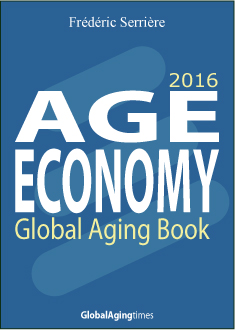Investors and developers looking to achieve a greater return on their investment in senior housing miss significant opportunity if they don’t include wellness services and programs. Why?
Residents of age-qualified communities who participate in wellness and lifestyle activities are very satisfied with their quality of life and the value they receive from living in the community, according to new findings from the ICAA/ProMatura Wellness Benchmarks National Report.
“Operators, especially those that are new to the industry, want a competitive advantage and tend to build communities with the most amenities,” said Edie Smith, vice president at ProMatura Group, the market research firm that performs the benchmarking data analytics. “The physical plant may attract new customers, but once they are in the building, it is the people and the quality of life at the community that they appreciate. Findings from benchmarking communities and their residents demonstrate how this impacts the community’s return on investment.”
Highlights of the report:
Wellness participants live independently about two years longer in the community than other residents. Longer average lengths of stay (ALOS) in the community translate to revenue for the community and savings on the cost of marketing. At benchmarking communities, the average length of stay of wellness participants in independent living is about two years longer than the ALOS of all independent living residents (both wellness participants and non-participants) in the community.
Participating in the wellness program results in high levels of resident satisfaction and customer referrals. At continuing care/life plan communities (CCRCs), participating in the wellness program made 79% of residents “much more” or “somewhat more” satisfied with their overall quality of life at the community. At independent living (IL) and combined independent living and assisted living (IL/AL) properties, 84% of residents felt that participating in the wellness program made them “much more” or “somewhat more” satisfied with the overall community.
Significantly, more than half of the residents who participate in the wellness program are “very satisfied” with their overall quality of life in the community: 54% in CCRCs and 56% in IL and IL/AL properties. The “very satisfied” group are the cheerleaders of the community, the people who spread a positive message outside the community and within it.
About out of every two residents say they were attracted to the community because of wellness programs. About half of the wellness participants in CCRC/life plan communities (49%) and 46% of the participants in IL and IL/AL communities “strongly agree” or “agree” that the wellness program is one of the primary reasons they selected their particular community. The communities reporting in the ICAA/ProMatura Wellness Benchmarks provide staffed, comprehensive wellness programs, which may influence the value the wellness program had for residents.
“The primary business goal in senior living is census, meaning all available housing units are occupied,” said Colin Milner, CEO of International Council on Active Aging (ICAA). “As this research shows, professionally staffed, comprehensive wellness programs are key services that help residents live independently for a longer period of time and raise their levels of satisfaction with the community—both results that directly add to the bottom line.”
The ICAA/ProMatura Wellness Benchmarks National Report is prepared annually from the aggregated data supplied by 73 continuing care retirement communities (CCRCs) and 26 communities offering independent living (IL) or both independent living and assisted living (IL/AL). The benchmarks collect information on the activities within the dimensions of wellness (cognitive/intellectual, emotional, environmental, physical, social, spiritual, vocational) where residents are engaged in pursuits that relate to an evidence base that participation supports health and well-being. The participation of individual residents is recorded to measure their engagement and relation to the living status and perception of the community.
The Executive Summary of the ICAA/ProMatura Wellness Benchmarks National Report is available on the ICAA website at http://www.icaa.cc/business/benchmarks.htm
The full 40-page report, including analysis and data, is available complimentary to communities enrolled in the ICAA/ProMatura Wellness Benchmarks and to members of the International Council on Active Aging. Copies are available to non-members for US $99.
The goals of benchmarking the wellness program are to discover if participation helps residents maintain or improve their functional abilities and live independently for the longest period of time. In the ICAA/ProMatura Wellness Benchmarks, wellness programs are defined as physical activity/fitness; cognitive training/brain games; cultural, art and performance activities; formal volunteering; health education; assessments; and lifelong learning/groups and clubs.


